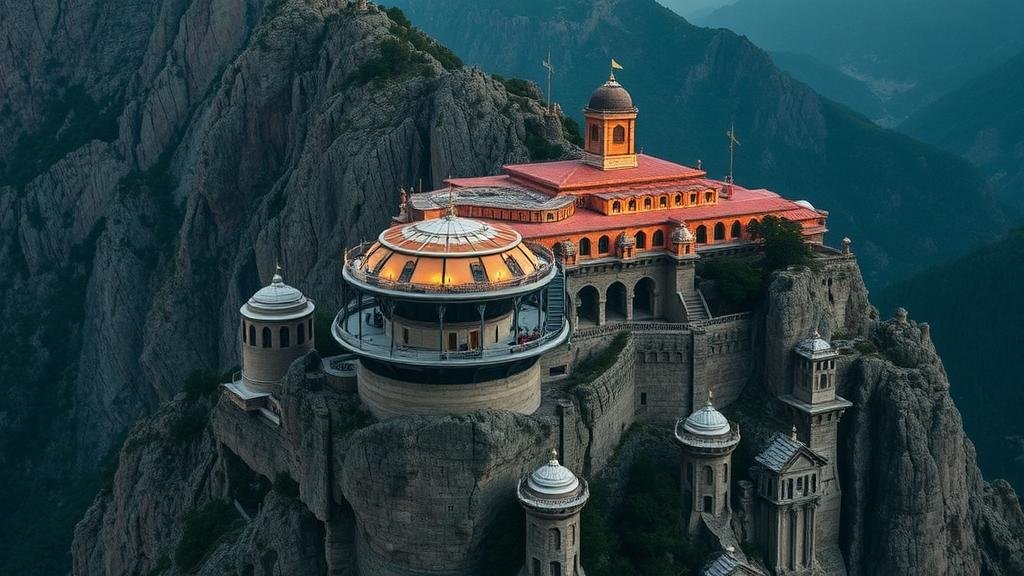Investigating hidden “sky cities” perched in the cliffs of remote mountain ranges.
Investigating Hidden Sky Cities Perched in the Cliffs of Remote Mountain Ranges
Across the globe, tales of hidden cities nestled among towering peaks captivate our imagination. These so-called sky cities, often shrouded in mist and legend, provide a remarkable glimpse into the ingenuity and resilience of ancient civilizations. From the breathtaking heights of the Andes to the rugged cliffs of the Himalayas, the interest in these extraordinary locations is as profound as their histories.
The Origins of Sky Cities
Sky cities often emerged as legitimate settlements built by indigenous peoples seeking refuge from external threats or harsh environments. e locations offered natural defenses, abundant resources, and a unique vantage point that allowed for strategic advantages over potential invaders.
- Machu Picchu, Peru: Built by the Inca civilization in the 15th century, Machu Picchu is perhaps the most famous example of a sky city. This UNESCO World Heritage Site sits approximately 2,430 meters (7,970 feet) above sea level and was unknown to the outside world until its rediscovery in 1911.
- Sigiriya, Sri Lanka: Known as Lions Rock, Sigiriya was an ancient royal citadel built in the 5th century AD. Located atop a massive rock pillar that rises 200 meters (660 feet), it features stunning frescoes and remains of sophisticated hydraulic technology, illustrating the advanced engineering skills of its creators.
Exploration and Archaeological Significance
The discovery and exploration of these sky cities have greatly enhanced our understanding of the civilizations that built them. Archaeologists and researchers have been drawn to these remote locations, unveiling artifacts, structural remains, and insights into the daily lives of their inhabitants.
In 2020, for instance, a team of archaeologists conducted a thorough investigation of a previously undocumented site in the Andes, revealing an extensive network of terraces and pathways that hinted at advanced agricultural practices among the ancient inhabitants. Such discoveries affirm the significance of mountain-top settlements as not just defensive strategies, but also agricultural hubs.
The Modern Lens: Conservation and Tourism
As awareness and interest in sky cities grow, there is an increasing need to balance conservation with tourism. Many sites, like Machu Picchu, experience millions of visitors annually, leading to concerns about environmental degradation and cultural preservation. In response, various organizations have implemented sustainable tourism practices, such as visitor limits, restoration projects, and community engagement programs to protect these valuable cultural heritages.
- Visitor Regulation: The Peruvian government has limited the number of daily visitors to Machu Picchu to 4,000 to reduce wear and tear on the delicate structures.
- Local Involvement: Tourism initiatives in Sigiriya have begun working with local communities to promote handicrafts and cultural experiences, ensuring that the economic benefits of tourism are distributed evenly.
Real-World Applications and Future Exploration
The ongoing investigation of these sky cities serves not only as an exploration of our past but also as a framework for future archaeological methods. Techniques such as LiDAR (Light Detection and Ranging) have revolutionized the ability to locate hidden structures beneath dense canopies or rugged terrains, opening doors to new discoveries and insights about ancient life.
As technology advances, our understanding of these sky cities will continue to deepen, allowing us to appreciate the complexities of ancient societies and their environments. Plus, the lessons learned regarding sustainability and conservation from these sites may become increasingly relevant as we confront similar challenges in modern urban areas.
Conclusion: The Allure of Sky Cities
Sky cities stand as testaments to human resilience and adaptability in the face of challenging environments. offer an intriguing window into ancient civilizations that managed to thrive at incredible altitudes. With ongoing exploration and commitment to preservation, the mysteries of these stunning locales will continue to inspire future generations. For anyone interested in both history and the thrill of discovery, the quest to uncover the secrets of sky cities remains an adventure worth pursuing.
Actionable Takeaway: If youre an adventure seeker or history enthusiast, consider planning a visit to one of these remarkable locations. Engage with local guides to deepen your understanding, and support sustainable tourism practices that protect these irreplaceable cultural treasures.



